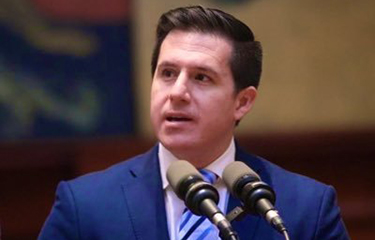Ecuador’s government putting an end to diesel subsidies for large shrimp farms is unfair, comes at a very inopportune moment, and seriously affects sector competitiveness, according to the executive president of the country’s National Chamber of Aquaculture (CNA), José Antonio Camposano.
The move will increase production costs by USD 0.16 (EUR 0.15) per pound of shrimp, affecting 82 percent of the country’s shrimp production area. Of the companies impacted, 30 percent are now at risk of going bankrupt, Camposano said.
At the beginning of December 2022, Ecuadorian President Guillermo Lasso announced his government would end diesel subsidies for shrimp farms with more than 30 productive hectares (74 acres). The move was in response to a series of protests in mid-2022 against Lasso’s economic policies. The demonstrations, which were initiated by Indigenous activists and triggered by rising fuel and food prices, snowballed as students and workers also affected by price increases joined the movement.
To appease protestors and bring an end to the often-violent protests, in October, the government pledged to cut an estimated USD 4 billion (EUR 3.7 billion) in crude oil subsidies annually to steer more funding toward social programs for the poor. The government said the move was “an ethical, responsible, and socially focused decision,” Reuters reported.
Shrimp represents Ecuador’s second largest export by value after oil. The country achieved USD 5.08 billion (EUR 4.56 billion) in shrimp export value in 2021 and the sector is currently responsible for the generation of some 275,000 jobs. Rabobank estimates that in 2022, Ecuador produced around 1.35 million metric tons (MT) of shrimp, its largest single-year volume growth, adding 300,000 MT to its supply over 2021.
However, considering inflation, rising prices in transport and commodities, and price sensitivity given worldwide economic uncertainty, the decision to cut diesel subsidies for Ecuador’s shrimp-farming sector was made “at the worst possible moment” and does not consider all the contributions the sector makes to the country’s economy, Camposano said.
“Our productive chain pays hundreds of millions of dollars in taxes and contributions, but our workers do not receive public health care and it is up to employers to assume that additional cost. The same happens with road infrastructure – inefficient public services that cost us hours of work and insecurity that, although being the exclusive responsibility of the government, our sector must address with private resources that exceed USD 80 million [EUR 74 million] per year. So who ends up subsidizing whom?” he said. “There is not a single decision that has improved our ability to compete in international markets,” Camposano said. “The government forces us to buy local soybeans [for shrimp feed] that are 50 percent more expensive than imported soybeans; that alone costs us USD 15 million [EUR 13.8 million] a year. This is the private sector subsidizing the inefficiency of the public sector.”
Camposano has been critical of what he sees as the government’s failure to bolster shrimp production competitiveness.
“When it comes to exports, the cooperation [from government] has been minimal. There is really no concrete public policy that addresses exports,” he said in a radio interview at the end of December. “When we talk about trade agreements, the one with Mexico failed. The ones that are up next are [South] Korea and China, and once they are agreed upon … they have to go through a long process in the constitutional court, the National Assembly, and then get approved. That won’t happen in months. It will take a couple of years, and the impact will be seen later on. We need solutions today. We can’t wait for the commercial agreements to come through to then start working on our competitiveness.”
The shrimp sector has made proposals to promote productive and export activity, according to the CNA, including automatic drawback – the refund of certain duties, internal revenue taxes and, fees collected upon the importation of goods and refunded when merchandise is exported – as well as the execution of a project financed by the Development Bank of Latin America, CAF, for more than USD 200 million (EUR 184 million) for the construction of infrastructure to bring electric power to the country’s rural shrimp farms, permitting them to stop using diesel to power the pumping systems at their production pools.
“None of these initiatives have received the expected impetus by any government authority, which impacts sector competitiveness. We lack palliative measures that enable us to face the difficulties coming from the global recession that we're going through,” Camposano said.
The CNA also criticized the government for its failure to provide adequate public security. It said that armed gangs have attacked numerous shrimp farms, killing one worker and injuring six others, and causing at least USD 155,000 (EUR 143,000) in damage thus far in 2023 alone.
Despite the withdrawal of the fuel subsidy, Ecuador remains the star of the shrimp-farming sector, Charoen Pokphand Foods Executive Vice President Robins McIntosh said recently at the National Fisheries Institute's Global Seafood Markets Conference in mid-January in La Quinta, California, U.S.A.
“No one can really copy what Ecuador is doing – only Ecuador can do Ecuador,” he said. “It's got resources that really you can't duplicate anywhere else, plus it has an industry that has developed since the 1970s, so much of the capital is already in it. And they’ve been able to change their dynamic around in ways that have been really beneficial.”
Rabobank’s latest aquaculture report, “What to Expect in the Aquaculture Industry in 2023,” found the global shrimp supply is on a positive trajectory, with Ecuadorian shrimp production set to grow between 18 and 30 percent in 2023.
Photo courtesy of CNA







